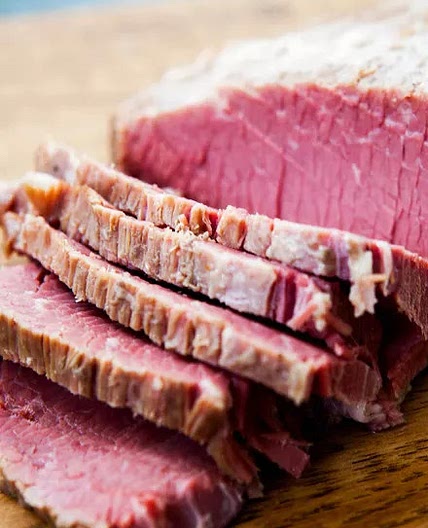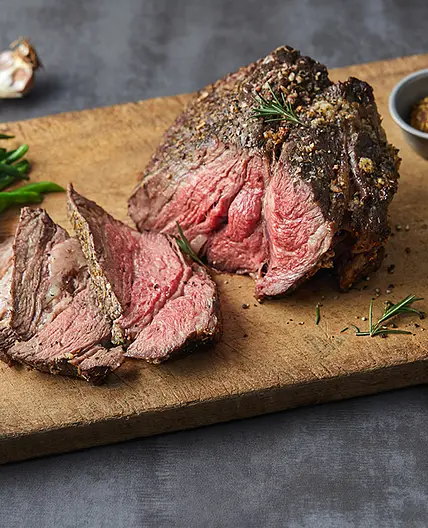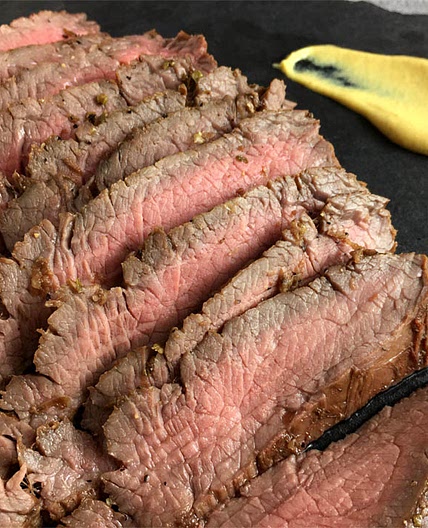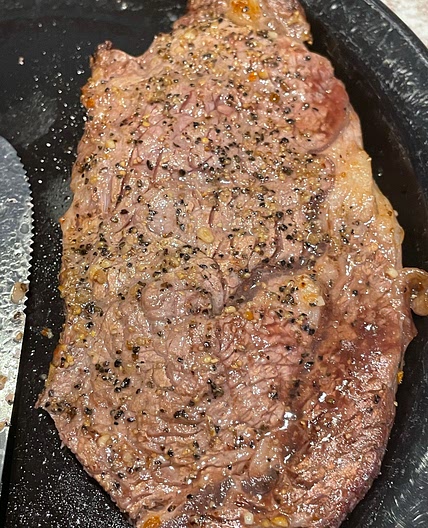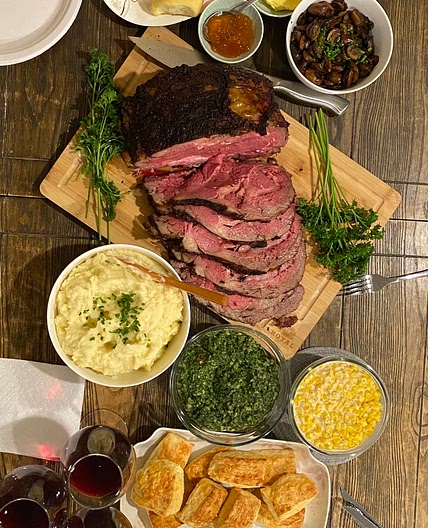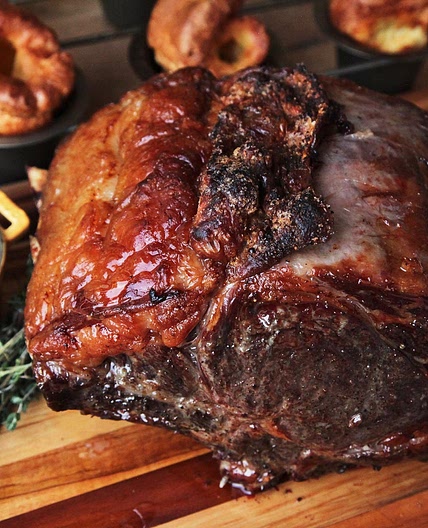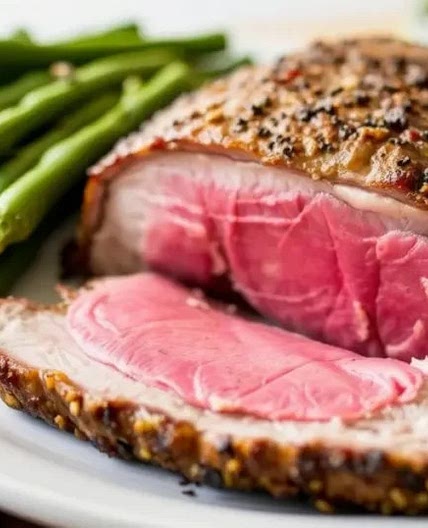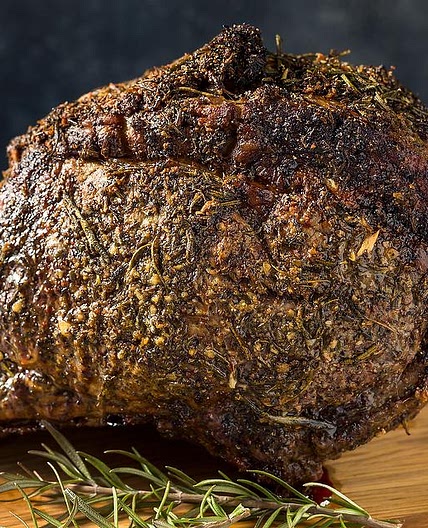By Stale Meme
Simple Standing Rib Roast
14 steps
Prep:23h 59minCook:4h 1min
A simple standing rib roast with a stone-ground mustard rub. Roast is salt-cured overnight and "reverse-seared" by baking twice at low and high temperatures. Make sure to pull the roast out 3 hours before cooking. Recipe comes with chimichurri and either a gravy or jus as accoutrements. Creamy horse radish is also recommend.
Updated at: Thu, 17 Aug 2023 13:11:16 GMT
Nutrition balance score
Uh-oh! We're unable to calculate nutrition for this recipe because some ingredients aren't recognized.
Ingredients
12 servings
For the Roast
12 lbrib roast
3 clovesgarlic
finely chopped
2 sprigsrosemary
finely chopped
1 Tbspwhole grain mustard
4 Tbspolive oil
For the Gravy/Au Jus
1 Tbspflour
2 cupsbeef stock
high quality, enriched with gelatin
1 cupred wine
2 teaspoonsworcestershire sauce
For the Chimichurri
Instructions
The day(s) before
Step 1
The day before cooking, cover the outside of the roast in salt. Use about 1/2 to 3/4 of a teaspoon of salt per pound of meat. Make sure to thoroughly cover the entire roast, mopping up salt with the sides.
Step 2
Place roast on a wire rack set in a rimmed baking sheet. Leave uncovered in the fridge for 12-48 hours to dry brine the meat. This will allow salt to penetrate into the roast, tenderize the meat, and dry out the crust on the outside for a better sear.
Preparing the Roast
Step 3
2-3 hours before roasting, pull the rib roast out of the fridge and let sit at room temperature. Bringing the roast up to room temperature will help it cook more evenly and maintain a nice pink inside.
Cooking the Roast
Step 4
Preheat the oven to 250°F
Step 5
Mix the garlic, rosemary, while grain mustard, and olive oil into a nice paste. Smear with the mustard rub on all sides of the rib roast, making sure to get every crevice.
Step 6
Drop the meat bone-side down into a roasting pan or deep sheet tray. If not making an Au Jus or gravy, you can roast it on a bed of herbs, but it doesn't seem to make a huge difference.
Step 7
Roast at 250°F with a thermometer probe inside until the center of the roast reaches 118°F, then pull it out of the oven and let it rest for at least 30 minutes, and up to 1 and 1/2 hours.
Step 8
Just before the roast is finished resting, preheat the oven to 500°F
Step 9
Once the roast has rested and the oven has preheated, pop the roast back in for another 10-15 minutes to crispen up the outside.
Step 10
Carve the roast up and serve. Remove the bones of the roast by sliding a knife down the back of them, and slice into thick slabs of steak. The bones can be saved and used for stock
For the Gravy/Au Jus
Step 11
The only difference between a gravy and an au jus is the use of flour. Gravy will use it as a thickener, while an au jus will thicken by boiling instead.
Step 12
To make the gravy, mix the flour into about 1/4 cup of the remaining beef drippings. Toast the roux gently, then slowly stir in the beef stock and red wine, deglazing the pan. Rich umami boosters like soy sauce, fish sauce, or worcestershire sauce can be added here, too. Simmer until thick and drizzle-able. Season to taste with salt. Gravy will have a much richer, thicker flavor and texture than au jus.
Step 13
For an au jus, omit the flour, and just deglaze the pan with the fat, broth, and wine. Simmer until semi-thickened and silky Season to taste with salt. Au jus will have a lighter, silkier flavor and texture than gravy.
For the Chimichurri
Step 14
Finely mince the parsley and garlic, and mix with the lemon zest and olive oil. Herbs like mint and cilantro can be used to enhance bright grassy notes. Grated onion and different vinegars can also enhance the tangy notes. Spices like cayenne pepper, mexican oregano, black peoper, and red chile flakes can change flavor profiles, and add some heat, as can fresh jalapeno or fresno peppers.
View on Joshua Weissman
↑Support creators by visiting their site 😊
Notes
2 liked
2 disliked
Delicious


